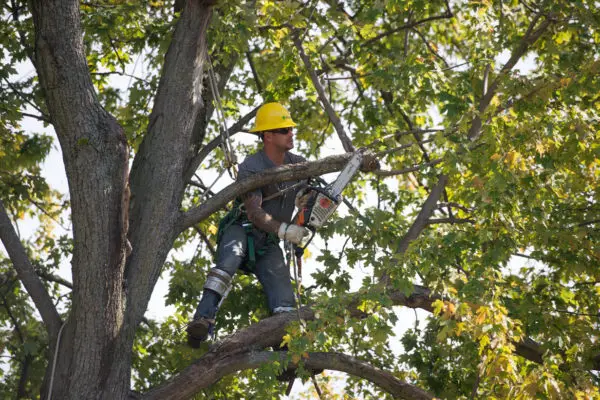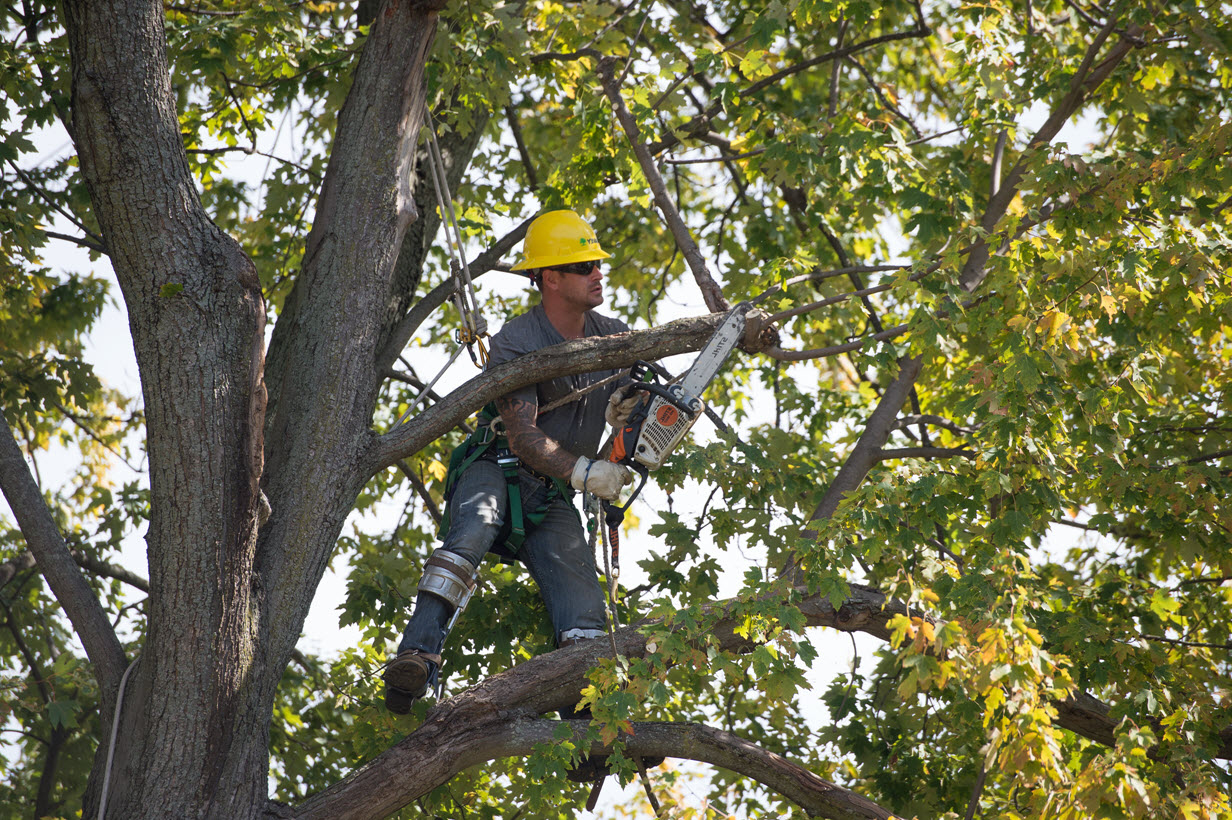When you have trees that have outgrown their space in your garden, you will need to reduce their size.
Pruning trees is hard work, and just thinking about it can cause despair, especially if you don’t have the time or the skills to complete the job.
But you do know that you don’t have to suffer in silence, right?

You can always seek the help of a professional. For instance, an expert arborist who has taken a working at heights course will help you clear overgrown trees in your yard. Such a professional will know the branches to cut, the best time to prune your trees, and how to keep the beauty of your trees intact even after pruning. Besides, you won’t have to worry about their safety or the safety of your property as such professionals have knowledge of the fall hazards they may encounter when working at high elevations.
But even as you hire a professional, you need to understand the science behind tree pruning. So, here is everything you need to know on how to take care of those overgrown trees in your backyard.
Why Prune
Overgrown trees can be hazardous as their overhanging branches can injure people or damage property. Others can obscure entry to your home or interfere with street lights, overhead cables, or traffic signals.
In addition to removing dangerous branches, pruning also serves other purposes, including:
- Removes dead and diseased branches
· Controls the shape and size of the tree
· Keep evergreens well-shaped and dense
· Encourages flower and fruit growth
When to Prune Your Overgrown Trees
The best time to prune your trees is early winter or late fall, when they are likely to heal faster. Besides, the branches are bare at this time, allowing you to see the structure of the tree better.
Oak trees shouldn’t be pruned in late spring or mid-summer when they have a beetle infection. On the other hand, cherry trees should be pruned in mid-summer to minimize the risk of them getting diseased with silver leaf disease.
If you notice diseased branches in your trees, don’t wait until early winter to prune them. Always prune them immediately to prevent the spread of infection. When pruning such a branch, dip your pruning blade in a bleach or alcohol solution to prevent spreading the infection.
Pruning of dead branches can also be done anytime as no living tissue will be affected. Ensure the cut you make is parallel and close to the trunk.
Which Pruning Tools Should You Use
To make sharp and clean cuts on your trees, use tools that are in good condition.
Here are a few tips to remember when buying your pruning tools:
- A chain saw is an efficient and fast pruning tool, but it doesn’t make clean cuts, which results in bleeding and slow wound healing for your tree
· If you intend to cut small branches, go for scissor action secateurs as they are known to make clean cuts
· If you intend to prune large branches, scissor action lopping shears are better than pruning shears as they have long handles that give you greater leverage to cut wide branches
· Pruning saws are best used for heavy-duty pruning done in tight spaces
· Hedge shears are used to prune hedges, not tree branches
· Hand saws are ideal for pruning branches that are more than an inch in diameter
· Pole saws have long handles for extended reach but do not give clean cuts
How to Prune Your Overgrown Trees
The method you use to prune the overgrown branches depends on the type of tree you intend to cut.
Pruning Deciduous Trees
Deciduous trees are best pruned in early spring when they are dormant. This ensures quick wound healing.
When pruning deciduous trees, you should use the 3-step method to make the cuts. The three cuts should be made close and parallel to the tree crotch and trunk. This helps prevent damage to the tree’s trunk and main limb.
Here’s how the 3-step pruning method works.
- Start by making a small shallow cut on the branch underside about four inches from its trunk
- Make another cut about 2 to 3 inches from the first cut. This second cut ensures when the branch falls off, it doesn’t peel on the trunk side or tear any bark.
iii. The final cut should be made outside the branch collar, where the branch and the trunk are adjoined. This cut is close to the trunk to ensure no stub is left once the branch falls.
How to prune evergreens
There are two types of evergreens, and their pruning methods are different.
The first type of evergreens are those that are pyramidal in shape whose branches are in whorls such as fir, pine, or spruce trees. For these trees, ensure you don’t prune their entire branches. If you do, you’ll leave gaps ruining their natural appearance. Pruning for these trees should only be done to trim new growth at the branch tip. Pruning your evergreens this way once every year increases their density and natural beauty.
The second category of evergreens are those with soft growth, such as cedars and junipers. Pruning of these trees should be done in early spring to clip back new growth. Clipping back just the dense branches once a season ensures the tree’s dense natural appearance remains intact.
Hire a Professional to Trim Your Overgrown Trees
Tree pruning is an art, and it is best done by a professional arborist.
A professional will ensure they cut the branches the right way to leave your tree healthy and thriving. A professional will also have the right tools and advanced training to do a great job.
It would be best to also hire an arborist who has taken necessary safety courses to promote their safety. Your recently hired arborist will spend a lot of time working at heights, and it’s your responsibility as an employer to protect them from avoidable injuries.
In closing, pruning your overgrown trees requires the right tools and skills to do a good job. Hiring a professional takes all the pruning worries from you. These experts have the right training, tools, and skills to ensure you end up with beautiful trees that are professionally pruned.


